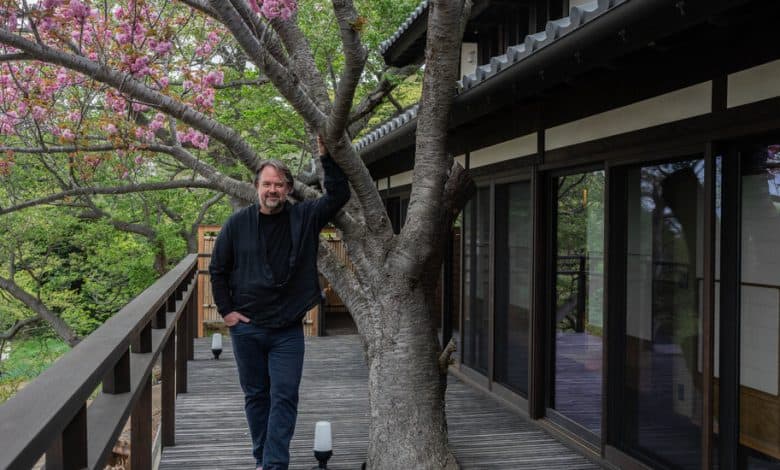The American Who Built a Supersized Japanese Aerie From Abandoned Parts

In the hills above Kamakura, the ancient samurai capital of Japan, Brian Heywood is overseeing 12 workmen as they put the finishing touches on his new home. Framed by blossoming yamazakura cherry trees, the sprawling aerie looks west over Sagami Bay, with Mount Fuji in the distance.
“I wanted people to be transported to another world when they drive in,” said Mr. Heywood, 57, on a recent afternoon.
The property, covering just over an acre in this seaside town about 30 miles south of Tokyo, has been a feat of negotiation and preservation. Shozan, as Mr. Heywood calls it, is a curious fusion of three centuries-old wooden houses, a decommissioned 150-year-old Buddhist temple and other cultural treasures — all meticulously disassembled, moved here from their original sites, and reconstructed over a five-year period. Their aesthetics and basic designs have been carefully retained. But the structures now have modern amenities like in-floor heating, and Western proportions like higher ceilings and bigger doors, reflecting the American who owns them.
Mr. Heywood sees Shozan as an act of conservation, and one that connects to his conservative worldview. Some of the buildings had been abandoned or set for demolition by their owners, who opted to give them away rather than have them restricted as “cultural properties” by the Japanese government. Meanwhile, as he completes his nature-centric compound in Kamakura, he is spearheading a fight to roll back climate change laws in his home state of Washington. His efforts, he said, align against what he sees as “government intervention disguised as virtuous programs that in fact take money from those who need it while providing no benefit.”
Mr. Heywood was born in Arizona and first came to Japan in the 1980s as a missionary with the Church of Jesus Christ of Latter-day Saints. “I fell in love with the temples and the houses and the gardening from the day I arrived,” he said. “In Osaka, we visited old country homes where they would have rows of bonsai sitting outside, and they would tell that some of the trees were a hundred years old, which meant multigenerational cultivation and protection of beauty. That is an unheard-of concept in the Western U.S.”
